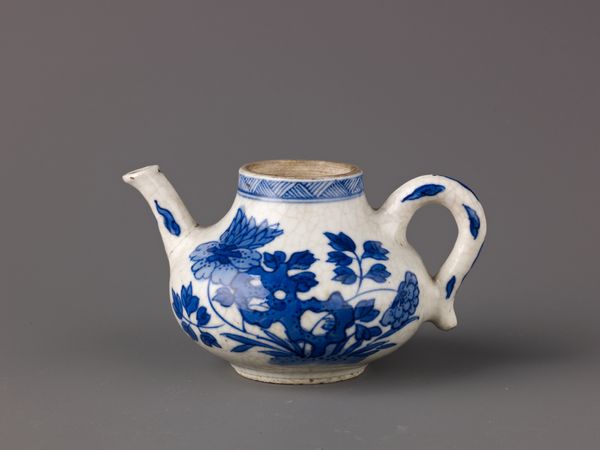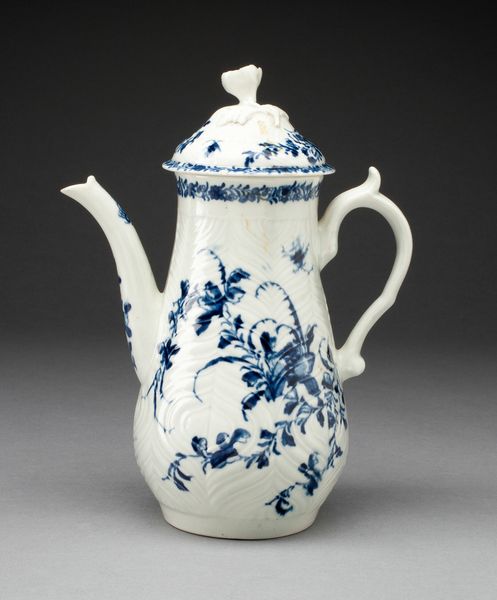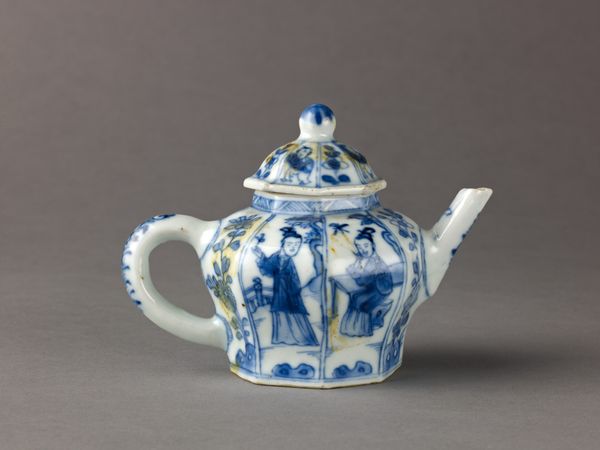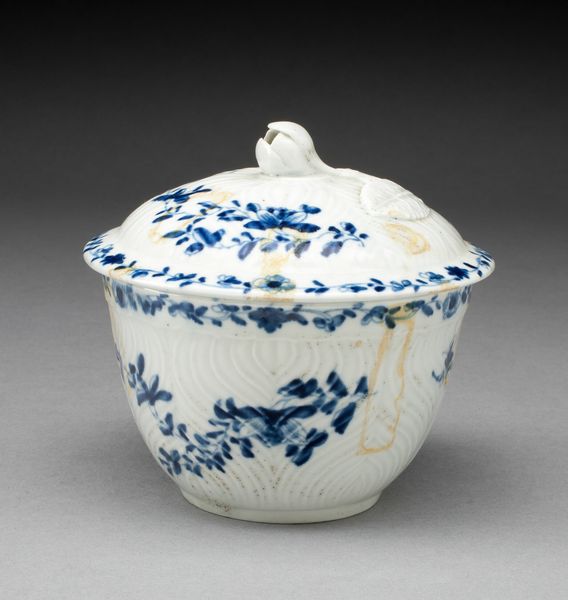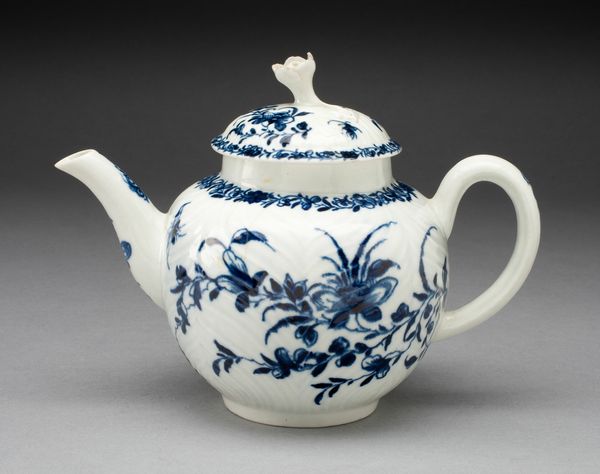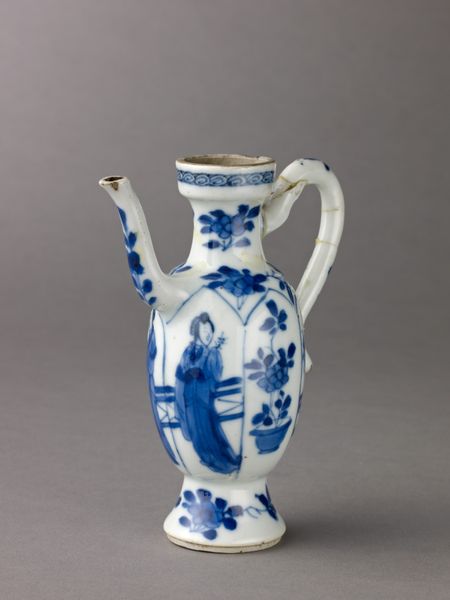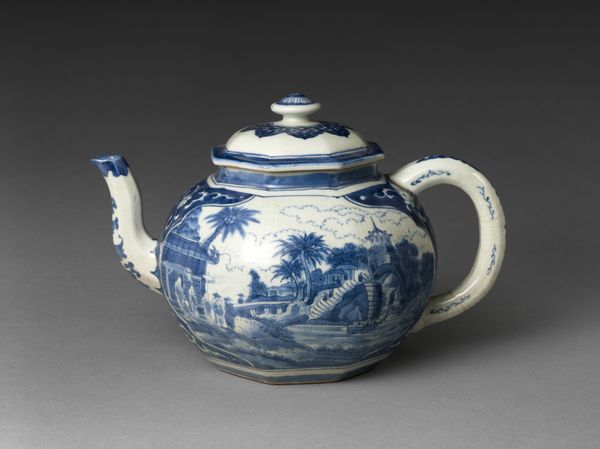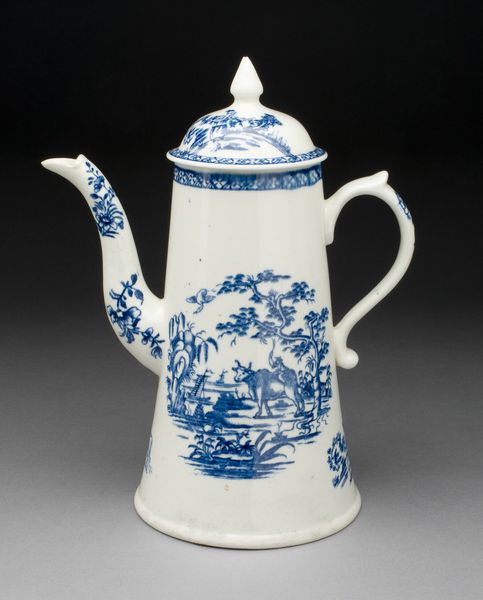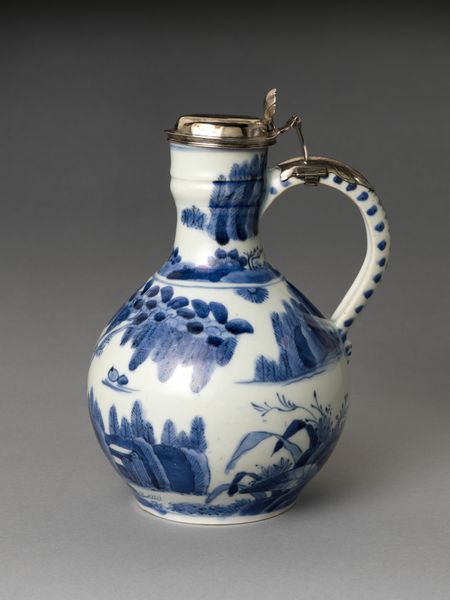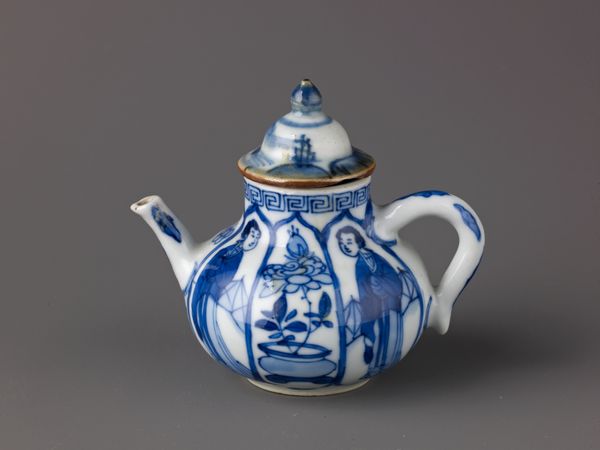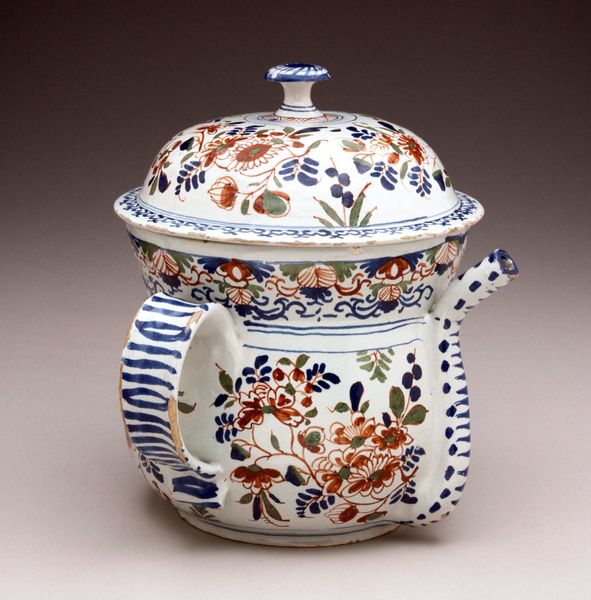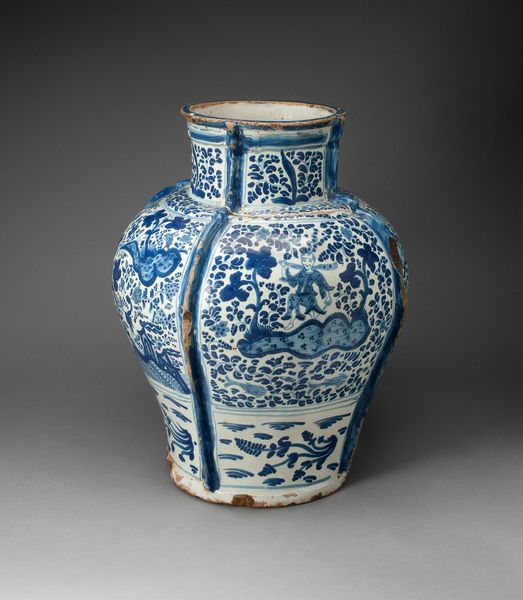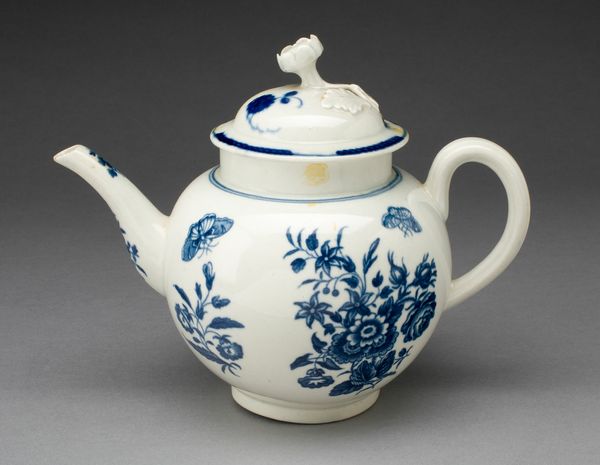
ceramic
#
asian-art
#
ceramic
Dimensions: Height to top of handle: 4 5/16 in. (11 cm.)
Copyright: Public Domain
Curator: Before us is a "Small Covered Wine Pot or Teapot," a delicate ceramic piece created in China during the Qing dynasty, specifically between 1662 and 1722. It’s currently held in the Metropolitan Museum of Art. Editor: My first impression is one of understated elegance. The blue and white ceramic work, combined with the squared-off handle, gives it a modern feel despite its age. The composition feels balanced and almost…peaceful. Curator: The cobalt blue decoration on the white porcelain body speaks to the technical expertise and the resources available during the Qing dynasty. Think about the mining of the cobalt, the refining processes, the firing temperatures necessary to achieve that rich blue. It's quite an accomplishment. Editor: Absolutely. And the specific patterns—are they merely decorative, or do they carry social and perhaps political significance? It reminds me of how material culture reflects the distribution of power. Were these motifs reserved for specific social classes, dictating who could consume from such a vessel? Curator: That’s a fascinating question. Blue and white porcelain was, of course, popular across many social strata both in China and abroad due to the increasing export trade. But the precision of the painting, the fineness of the ceramic—suggest a higher level of craftsmanship probably destined for wealthier consumers. Editor: Which brings up questions of labor. Who were the individuals who painstakingly decorated this teapot? Understanding their working conditions, their lives, would add a deeper layer to our understanding of this object. Did gender or ethnic background play a role in assigning labor within the porcelain workshops? Curator: The scholar-officials would have designed and supervised, but the artisans themselves often remained anonymous. Their skill, their manual dexterity honed over years of apprenticeship, is really what makes this piece sing. You see it in the precision of the floral details and the evenness of the glaze. Editor: Exactly, those very hands imbued the object with more than just decoration; they're silent narrators in this history. And by understanding the cultural implications and contexts in which it was both produced and intended to be used we give voice back to those lost makers. Curator: By understanding those production processes, the materials involved, and the markets it was intended for we gain a better understanding of Qing material culture as a whole. Editor: A ceramic pot opens pathways to the politics of artistry and making, compelling us to seek lost connections that enrich its story.
Comments
No comments
Be the first to comment and join the conversation on the ultimate creative platform.
